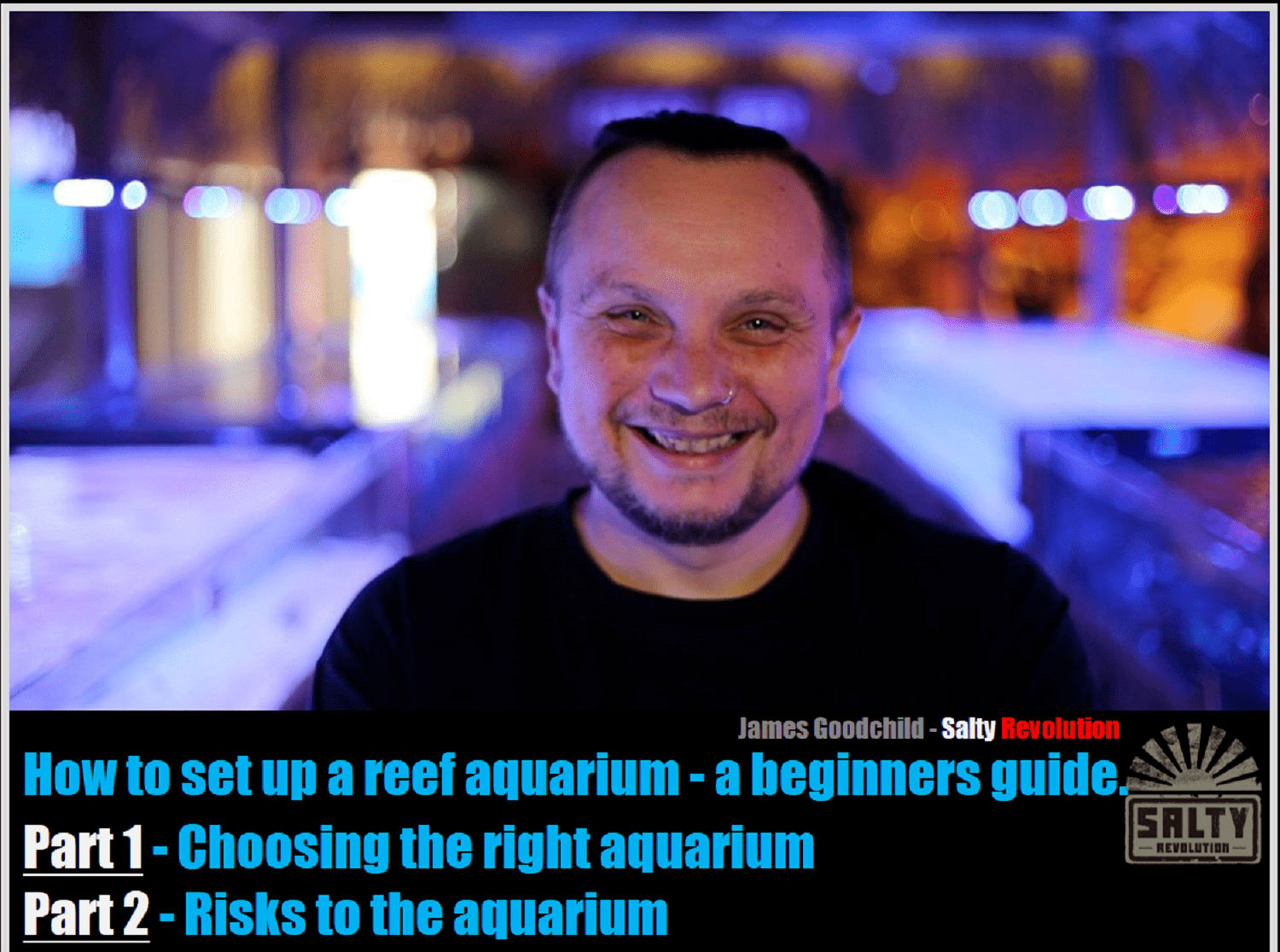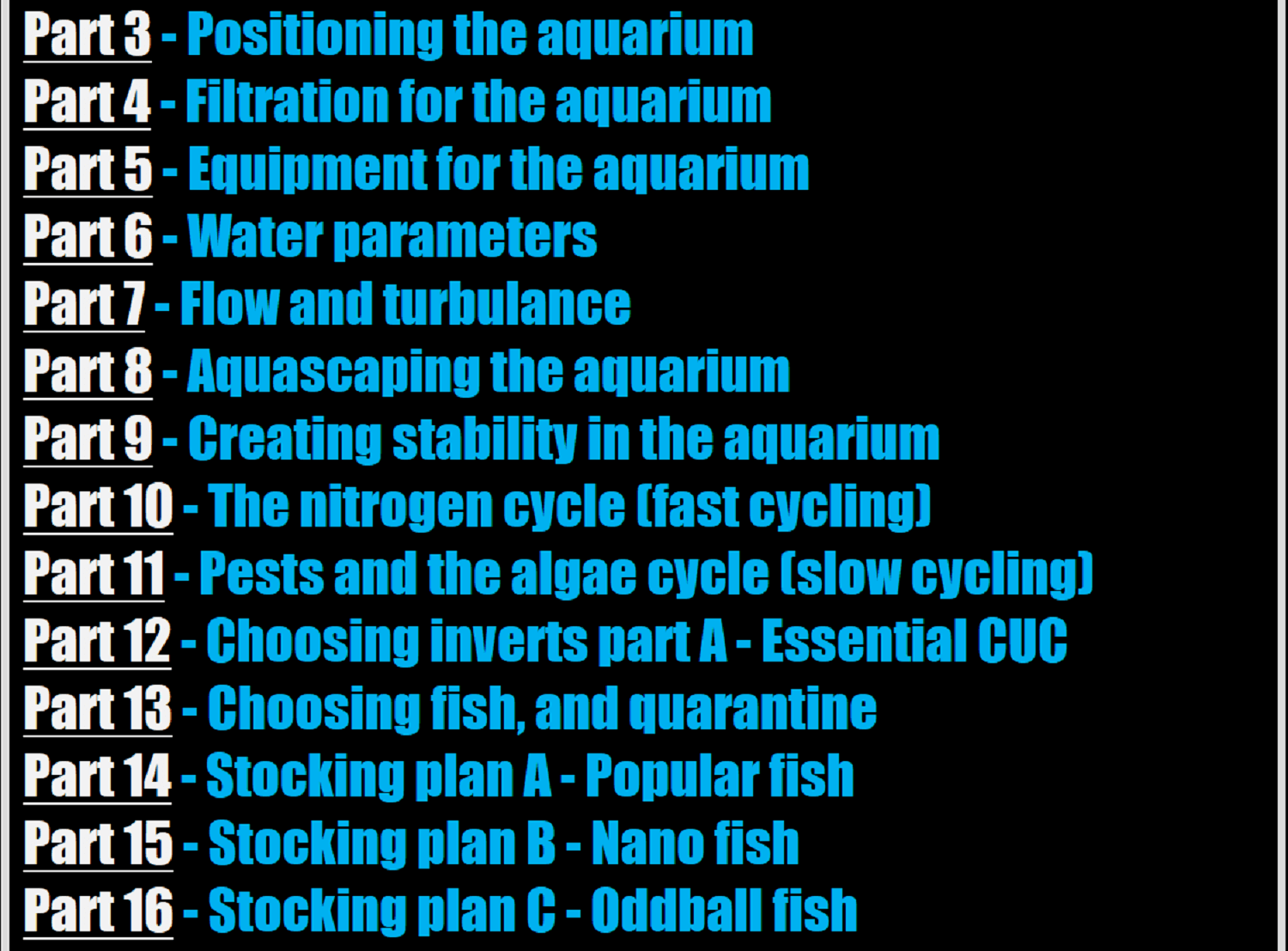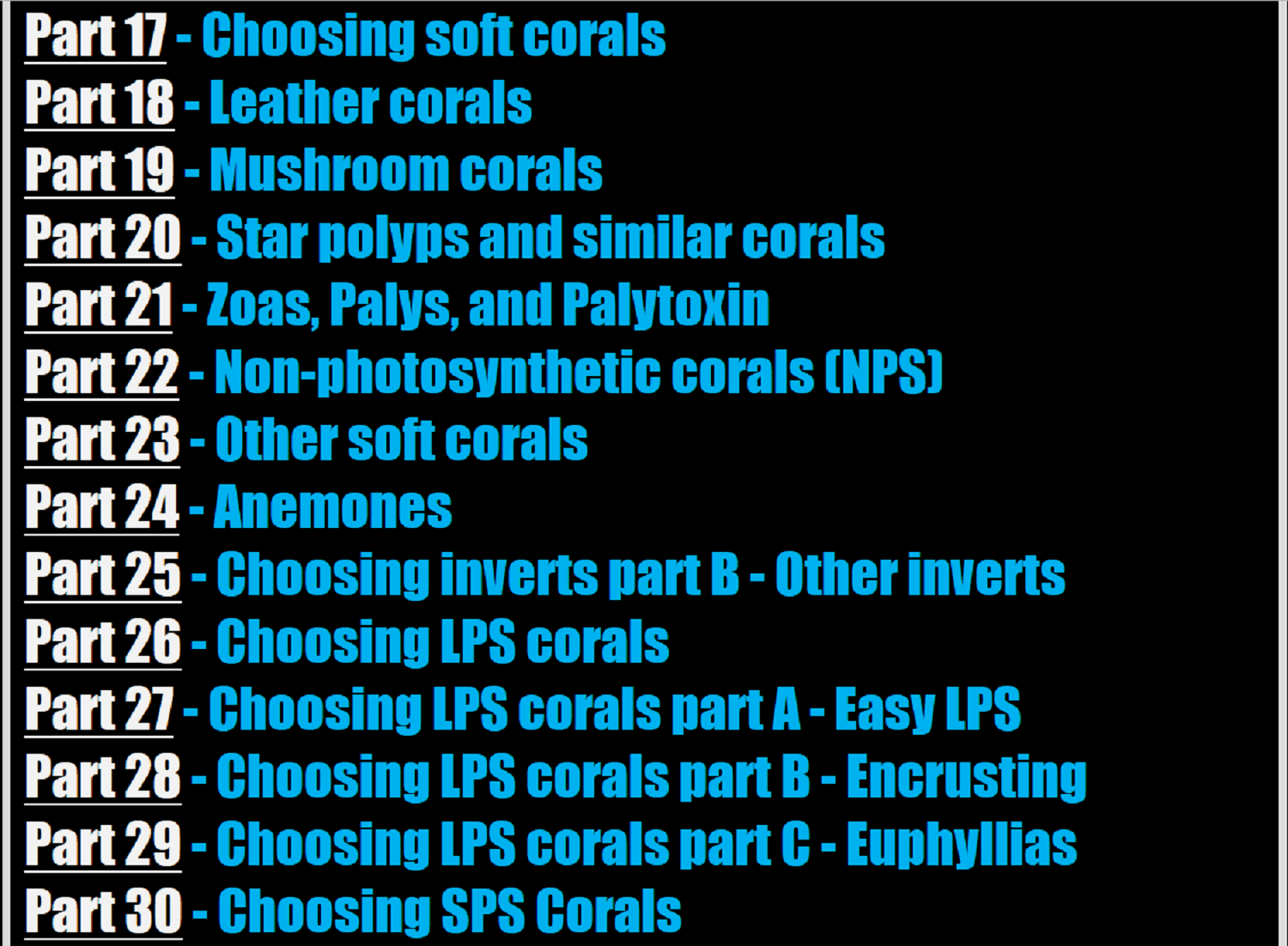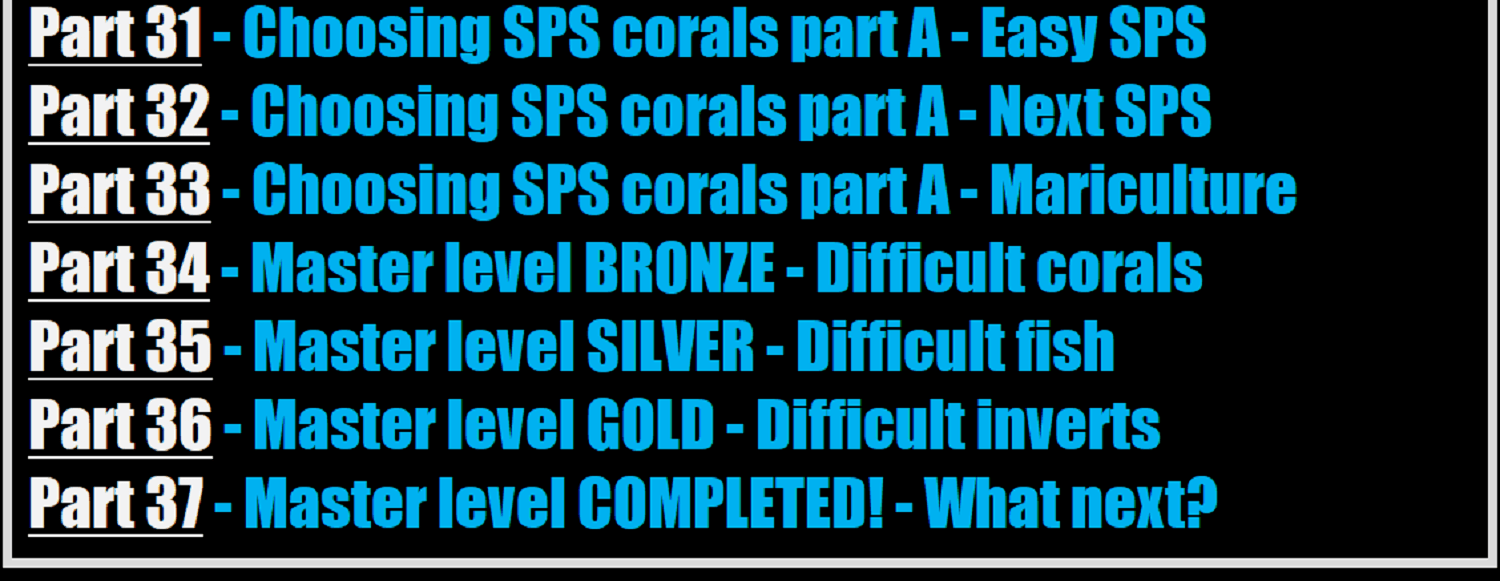How to set up a reef aquarium - PART 2 - Risks to the aquarium aquarium.
How to set up a reef aquarium - a beginners guide. PART 2 - risks to the aquarium.
Introduction to setting up a reef aquarium, by James Goodchild at Salty Revolution.
Sign up to our VIP mailing list below, so you don’t miss out on all this free advice. Our VIP mailing list is free to join, no membership costs, you can unsubscribe anytime you want, we only need your name and the email address you’d like our updates sent to. We don’t share your details with anyone else either. You also get info on new shipments, special VIP first peek options, VIP offers, and even special VIP priority store opening days, etc. You might save yourself a fortune by joining, and if it’s not for you then you can always unsubscribe whenever you want. Although I doubt you’d want to!
PART 2 - Risks to the aquarium
BASIC ADVICE
Always run Carbon and Polyfilter (this is not the same as filter wool).
Always wash hands and forearms to remove things like; sun tan lotion, perfume, aftershave, nail polish remover, nail polish when wet, hand sanitiser, and any traces of soap.
Avoid algae magnets, paper roller filters, and filter socks. Don’t use artificial ornaments, ceramic rock, dark brown/black volcanic rock, anything with streaks (eg patterned slate or marble), secondhand rock, or rock collected from the beach.
If you can smell any man made fragrances near the tank don’t use them. Be careful of metals near the tank or sump, such as metal light fittings that show rust, hinges that rust, metal jubilee clips. Check heaters monthly at at least (very carefully) for damage.
Avoid putting the tank near real fires or daylight. Avoid facing the tank towards a TV, and avoid speakers near the tank. Avoid cut flowers or cleaning products near the tank. Avoid any aerosol, spray, flea treatment, or cut flowers in the same room as the tank. Avoid scented candles in glass jars, tumbledryer fabric conditioner sheets, or plug in air fresheners in the same building. Avoid planting sunflowers in the garden, don’t carry cut flowers or grass cuttings past the tank.
Also be very careful if using any Vegan products, or any products described as “not tested on animals”. Whilst it’s generally considered a good thing that products aren’t tested on animals, the downside of that is that of course it’s not then known whether those products are safe around animals. Whilst the manufacturer has been trying to do the ethical thing by avoiding animal testing, the end result of this is sometimes the deaths of many people’s pets. Be particularly careful regarding carpet cleaning products that have not been tested on animals, as we have seen several tank wipeouts caused by using them.
JAMES SAYS
That might seem like a long list of things to avoid, it is. There are many risks to the home aquarium, but, once you understand the types of things that can be a risk, then it’s easier to see why each thing is a risk.
Household cleaning products and scented products - Many household products contain nasty chemicals that you do not want in your aquarium. The simple rule is don’t use anything remotely near the tank itself, or anything that will go into the tank. If you can smell it at all near the tank it’s too close. Some things such as scented candles in glass jars (especially new Yankee candles), fabric conditioner sheets designed for tumbledryers and plug in air fresheners are particularly deadly.
Scented candles in glass jars - One of the biggest killers of marine fish in October (Halloween) and December (Christmas). These are banned from manufacture in the UK, and illegal to be sold in the USA. However, due to a legal loophole they can be made in the USA and sold here. The wax is often paraffin based, when combined with lemon oil (used to lift the scent), and the lead in the wick, and heated, it produces Hydrogen cyanide in huge amounts. Burning some flavours such as Pumpkin spice, Christmas, or Citrus, for 1 hour in a room the size of a double garage can produce Hydrogen cyanide at up to 200 times the World Health Organisation recommended safe limits. The fumes of any scented candle in a glass jar burning anywhere in the house can within minutes produce enough Hydrogen cyanide to kill fish, inverts, and many species of caged birds. It’s been linked to asthma in cats and dogs, and even in children. DO NOT USE THEM! Incense sticks and oil burners are usually fine.
Fabric conditioner sheets designed to be used in a tumbledryer - Not as deadly as scented candles in glass jars, but, still avoid using them at all. Fabric conditioner liquid is usually much less harmful, if used in a washing machine.
Plug in air fresheners - Also very deadly. The Fire Brigade have been trying to get them banned as they are also the most common source for house fires.
Anything that goes out of the tank, and back in again - Things such as filter socks, paper filters etc. If it leaves the water, sits around, then goes back into the water it can pick up toxins from the air or surfaces and go back into the tank. Things like nets aren’t so bad as they are not porous, but paper, matting, fabrics, etc, easily pick up unwanted products then take them with them into the tank. The same also applies to anything on your hands and forearms such as; sun tan lotion, perfume, aftershave, soap, hand creams, etc.
Carbs are bad! - Carbohydrates such as; sugars, alcohol, plant pollen etc, and things containing them such as perfumes and white spirit, can cause a bacterial bloom if they get into the water. The bacteria can multiply quickly on this unexpected surge of food, often turning the water hazy, foggy, misty, or cloudy. These bacteria use up a lot of oxygen, and produce a lot of carbon dioxide. It’s easy to get more oxygen into the water, but, saltwater does not easily shed carbon dioxide, causing mass suffocation. Sunflowers produce so much pollen even in a neighbouring garden they can cause problems. Also avoid carrying cut flowers or grass cuttings near the tank. Sugar or flour on hands from eating doughnuts or floured rolls are a risk too, wash hands carefully before touching the tank, feeding, or tank equipment.
Toxins - Things such as flea sprays, insecticides and pesticides can be a problem, even if used in a neighbouring garden or field.
Second-hand items - Avoid second-hand rocks and sand, they could have soaked up all sorts of toxins elsewhere that can leach into your tank, which even months of presoaking may not remove. Equipment is usually ok, but, not if meds have been used with it, and bin all media and media bags etc. Plastics can soak up and release a surprising amount of toxins, mainly ones deadly to inverts, but, fish and corals may die too. Worst of all it might be fine for months before enough stuff leaches out for the deaths to begin. It’s not Nike, just don’t do it.
Anything collected from the beach or bought as an ornament - As above it could soak up metals, oils, all sorts. Many man made supposedly reef safe ornaments can disintegrate creating pockets of toxic gases, or leach toxic dies into the water. We’ve even seen some imported glow in the dark ornaments using uranium to make them glow, seriously! Even plastic plants that are fine infreshwater can prove deadly in saltwater. Avoid all man made ornaments even if made by a reputable aquarium manufacturer. The only two exceptions I regard as safe as Real Reef Rock and Caribsea LifeRock, anything else do not trust it.
Metals - Metals are bad news! Dropped coins, foil from fish food that falls in the water, algae magnets, heaters with condensation in them (showing they are no longer moisture proof), metal jubilee clips on pipework, net handles, etc. Any metal that is rusty is a major threat, and metal in the water is a big risk. Even some pump impellors can be a problem, and we’ve seen so called Titanium Heaters (which aren’t usually Titanium by the way they are just called that), can all be problems. Metals are bad!
Flickering lights, sound and vibration - Flickering TV screens (especially if you like watching Techno music videos or horrow movies), sound, vibration, etc, can disturb the fish. Even if you don’t watch those, who knows what kids and visitors do when you’re not there!
Polyfilter - Polyfilters are your life line. Usually sold under the Arcadia brand, and costing about £10 to £20 for a piece about shoe sized. Worth every penny. They are not to be confused with filter wool which is a mechanical filter media. Polyfilter absorbs/adsorbs, many nasty toxins. When it absorbs them it changes colour. The colour it changes to shows what it has absorbed. If they absorb ammonia they turn yellow/green, with copper its blue, etc. Not only does it absorb it save you, by looking at the colour you can often tell what threat it saved ypou from. When it’s the colour of Cadbury’s chocolate all the way through, change it. If it turns a funky colour such as; red, yellow, blue, green, etc, change it. Always run them. Always keep several spares. These will save your system time after time, and on a 50-100 tank you’ll probably only use 1-3 in a year. Always, always run Polyfilter.
Carbon - Carbon does a similar job to polyfilter, but, not as effectively, not as quickly, but, it does it at less cost and does other things too. Carbon removes dyes and odours from the water making the water sparkling clean and smelling ocean fresh. As well as making your tank nicer for you, clearer water means more consistent light levels for your corals, which in turn means higher growth rates. It also traps the stinging cells (Nematocysts) that soft corals release to wage war on one another. Despite the commonly held belief it can trap trace elements, it’s not a major issue. Always run lots of carbon. Use marine grade carbon of the highest quality you can find. Cheap carbons can be poor value for money and even toxic in some cases. Use 1 ml of carbon per litre of water and change monthly. When you add the new carbon, leave the old one in, and place next to each other. Then the following month remove the oldest bag of the two, replace with fresh, and leave the newer of the two bags behind. That way there is always one old one to get every scrap of use from it, and one new one to make sure the job gets done. You still need to run Polyfilter too though. Use Carbon to do the donkey work, and Polyfilter to mop up anything the carbon missed. Belt and bracers approach here at all times. I regard running carbon and Polyfilter as 2 of the 5 most essential things to do. The others being correct salinity, temperature, and doing lots of waterchanges.
That’s all for PART 2, in PART 3 we look at Positioning the aquarium.
Links
Sign up below so you don’t miss future parts of this series.
Click the button below to find out more about our 100L Coral Zoo project.
Salty Revolution; Facebook, YouTube, Instagram, and email us.
James Goodchild
Salty Revolution




















A beginners guide to setting up a reef aquarium.